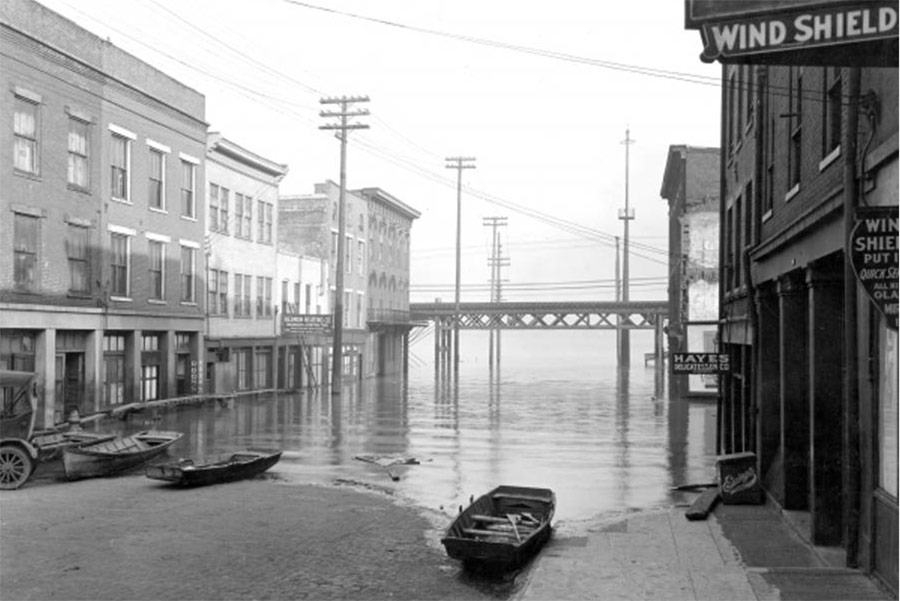Congratulations to Jeff Noble and Debra for correctly identifying our last sidewalk challenge as Franklin Street looking west between Wenzel Street and Campbell Street. Here’s a new historic sidewalk challenge that’s likely going to be a little trickier. Good luck and leave your guesses in the comments below.
And now, here’s your weekly list of top urbanism stories in the news.
60 Minutes: Politics of Infrastructure. In this article, Rick Rybeck succinctly lays out the four major problems around infrastructure funding hold-ups in the U.S.—one of the top issues in our country today. He also includes some really nice graphics at the bottom of the article. Sustainable Cities Collective
Unresolved. Pete Saunders at Corner Side Yard continues to provide some solid reporting around the intersection of race, geography, and urbanism. This is part one of two. Corner Side Yard
10 Great Novels Every Urbanist Should Read. Fiction, often left out of urban studies, can play an important role in investigating the imagined lives of those that inhabit cities. Think of it like a utopian urban investigation. Henri Lefebvre would approve. Next Cities
Best Books 2014. And for those that want some more ‘academic’ reading. Here are the Dirt’s best reads on the built and natural environment. The Dirt
Critiquing the ‘Twenty Percent’ Argument Against Transit Funding. Michael Lewyn, in an opinion piece, takes on the ‘Twenty Percent’ argument over transit funding. Excellent use of qualitative measures of cost vs. quantitative. Planetizen
The Powerful Symbolism of Shutting Down an Interstate. What’s so powerful about the symbolism of protesters taking to the interstate in St. Louis and New York City? Why does the chant, “whose streets, our streets”, resonate so strongly? Alex Ihnen explains the case for St. Louis. Next STL
Why Grassroots Organizations Could Solve our Biggest Problems. Njaimeh Njie explores the connection between grassroots movements, the new economy, and what it takes to address real community problems. Urbanful
Historic Preservation Tuesday: I don’t understand the $1 million special program for Louisville, Kentucky. Richard Layman challenges the National Trust for Historic Preservation’s new million dollar program in Louisville. Layman calls for some clarification around what exactly is the point of this project given our already expansive knowledge on the topic? Urban Places & Spaces
Introducing the Latest, More Powerful Generation of Land Banks. While the idea of land banks dates back to the 70s, innovative use of this ‘banked’ land (and support for this mechanism) has been far from inspiring. With a recent uptick in land banking by cities, will we see new uses beyond making tiny parcels commodities for developers? Next City
Cities are places where the powerless can shape history: the Right to the City in the 21st Century. Saskia Sassen is one of our most staggering scholars around ‘global cities’, urban economics, and informal economies of the Global North. Alia Dharssi caught up with her at the London School of Economics Urban Age Conference in New Delhi on November 15th. She talks about the governance challenges facing the world’s cities today and the ways in which average people can voice their concerns in the face of big money. The Global Urbanist
[Top Image: Reference URL.]



4th St at Main, looking towards the river
4 th and River Road looking north.
This is the Fourth Street block north of Main Street, looking at the Short-Line Railroad. In earlier times, this one block section of Fourth was called Wall Street. Today it runs under the Galt House Conservatory that bridges both sections of the hotel complex.